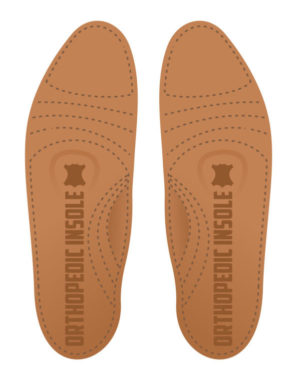 When it comes to orthotic inserts, new findings suggest that contoured orthotics may be more successful at lowering a person’s risk of stress fractures while walking or running compared to shock-absorbing insoles.
When it comes to orthotic inserts, new findings suggest that contoured orthotics may be more successful at lowering a person’s risk of stress fractures while walking or running compared to shock-absorbing insoles.
For their study, researchers conducted a meta-analysis of 11 trials involving contoured orthotics and seven studies of shock-absorbing insoles, involving a total of 3,200 people. When comparing the insoles to injury risk, researchers found that contoured foot orthotics were linked to a 28 percent reduced risk of walking or running injuries and a 41 percent reduced risk of stress fractures. On the flip side, shock-absorbing insoles were not linked to a statistically meaningful reduction in overall injuries or stress fractures.
“By pooling the results of all available trials on this topic we found that foot orthotics were effective for preventing shin pain and some stress fractures of the foot and leg (metatarsals, tibia and femur) as per previous studies, but we also found that overall injuries were reduced,” said lead study author Daniel Bonanno of La Trobe University in Melbourne, Australia.
Orthotic Inserts And Injuries
Orthotic insoles are often used by professional athletes, weekend warriors and amateur exercisers in order to take pressure off their feet, but this research shines a light on which inserts you should reach for. In most circumstances, contoured foot orthotics are designed to optimize foot function by helping shift weight distribution and foot pressure with each step. Shock-abosorbing shoes, for the most part, tend to be flatter and designed to reduce the force created by the impact of the foot striking the ground. They both are grounded in good intentions, but it appears that contoured orthotics do a better job of reducing your likelihood of injury.
The authors did caution people against reading too much into the study results, because they stated that the majority of the data they studied was collected from military studies, suggesting that the physical activities they endure may not be that similar to the activities performed by the average exercising adult.
However, if you are interested in getting an orthotic insert for your shoes, medical experts say you should consult with your foot doctor to ensure you get one that best matches your need.
“For athletes, and anyone in general, you need to rely on the health care professional to evaluate and decide if you are a candidate for an orthotic,” said Dr. Selene Parekh, a researcher at Duke University who was not involved in the study. “The right fitting orthotic can allow athletes to continue to participate in sports activities through some injuries, such as a fifth metatarsal stress fracture or turf toe injury, but a bad orthotic can worsen symptoms of an injury.”